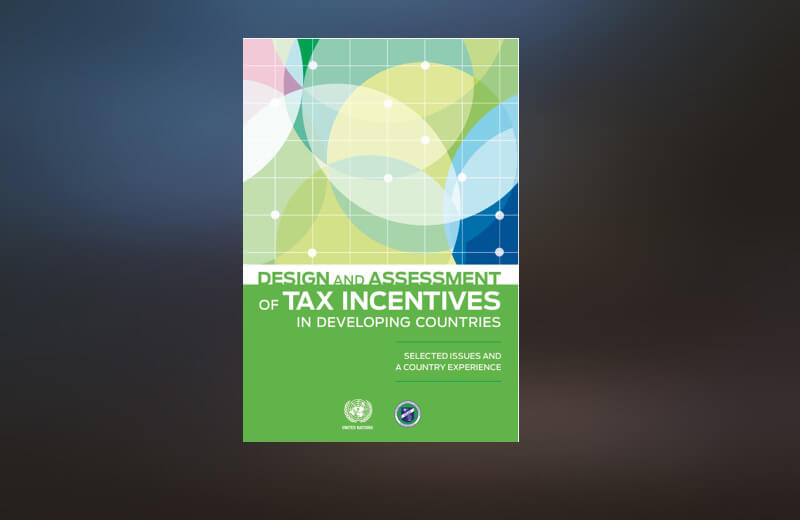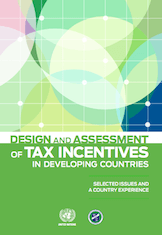United Nations / CIAT: Design and Assessment of Tax Incentives in Developing Countries


The purpose of this publication is to provide tax policy makers and administrations with a practical and easy-to-implement methodology that allows them to estimate the net benefit of a tax incentive program in order to improve the design, assessment and administration of such a program, thereby supporting possible administrative reforms and improving tax procedures with a view to fostering greater tax efficiency, economic growth and equity.
This publication comprises three Parts. Part I deals with the theoretical background of tax incentives and includes two Chapters. Chapter I offers an overview of key concepts and issues regarding tax incentives and their use to attract investment. Chapter II examines the benefits and costs of using tax incentives and presents important considerations for designing, granting and monitoring the use of tax incentives to increase investment and growth.
Part II focuses on practical considerations regarding the use of tax incentives. It encompasses two Chapters. Chapter I provides a list of items to be considered and addressed when drafting a tax incentive scheme to ensure consistency between the legal framework of such scheme and the policy underlying it, as well as clarity with respect to the scope of application and easiness in its administration. Chapter II proposes a cost-benefit analysis as an approach to assess the effectiveness of tax incentives. It includes a conceptual framework for such analysis, a comparative study of two existing schemes used in the United States of America, and a prototype model of cost-benefit analysis for assessing tax incentives without involving sophisticated economic modelling tools.
Part III contains a detailed report on the cost-benefit analysis of tax incentives granted to the tourism industry in the Dominican Republic. It includes a review of the performance of the tourism industry in the Dominican Republic from a historical and regional perspective, as well as an assessment of the benefits and the costs (including the opportunity cost) of such a program.
While all the considerations and recommendations presented in this publication are based on several approaches that have proven to be good practices in various countries, tax administrators should be cautious in applying them to different contexts and should consider the legal framework and the degree of institutional development required to adapt such practices to the situation in any specific country.
3,213 total views, 3 views today
